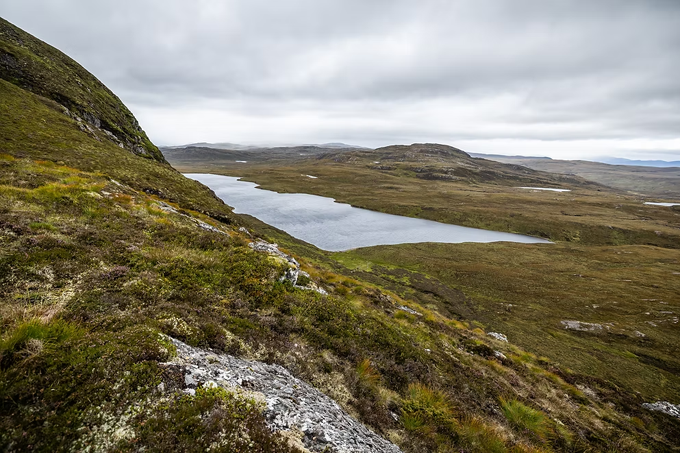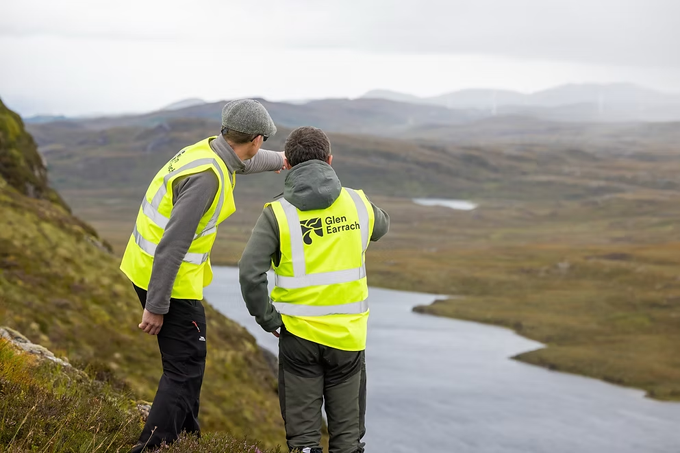
The Highlands, and more specifically, Loch Ness, is amongst the most iconic landscapes in Britain. But behind that beauty lies a difficult question: what role should places like this play in the country’s energy future?
Across the UK, the shift to renewables is well underway. But without long-duration energy storage, their full potential cannot be maximised and the hundreds of millions of pounds spent on curtailment payments every year will continue to grow. That is where Pumped Storage Hydro comes in. It is a proven, mature technology, and if we want clean power when the wind isn’t blowing or sun isn't shining, we will need more of it.
That choice belongs to both the UK and Scottish Governments. But if pumped storage is coming to Loch Ness, it matters how it is done.
Because this is about more than just energy. Projects like this are part of a bigger national mission - delivering net zero, building energy security, and keeping bills down over the long term. Getting that right depends not only on the quality of the engineering, but the quality of the relationships that shape it. We have been led by both of those values and by the hundreds of conversations we have had over the past year. We are grateful to those who challenged us, worked with us, and brought local knowledge to bear. Our project is better for it.
Last week, Glen Earrach Energy submitted its planning application. It marks a major milestone for a project that has been shaped by dialogue at every step. And while the planning documents are detailed, the principle behind them is simple - we believe this scheme can help deliver something of national importance while also strengthening and protecting what is locally valuable. For us, the UK’s clean energy future is based in the Highlands and it is important we work with the landscape, not against it.
However, that future will only be fully realised if we take local realities seriously and work with the grain of the landscape. One example is the Dochfour Weir. First built nearly 200 years ago by Thomas Telford, it plays a critical role in maintaining year-round water levels through the Caledonian Canal from Loch Ness, ensuring safe passage for boats. Our experts have identified that if pumped storage is to be constructed on Loch Ness, the Weir will need to be adapted to mitigate the impact of these additional PSH developments. We are working closely with Scottish Canals, as owner of the Dochfour Weir, to explore options that would not only protect the flow into the River Ness and navigation in the Caledonian Canal, but also address long-standing environmental challenges. With the right modifications, we believe this legacy structure can be part of the solution, delivering benefits well beyond our project alone.
Our Environmental Impact Assessment identified an existing significant mortality rate of 81% for migrating salmon smolts in the Ness catchment, with the existing Weir acting as a major barrier. This baseline is clearly not something our project has caused, but it is something it can help solve. Not only is modifying the operation of the Weir necessary to unlock the potential of pumped storage on Loch Ness, but done properly, it provides an opportunity to fix this long-standing problem and deliver a net environmental gain. We are exploring practical solutions, including seasonally adjusted operation of the Weir, such that the effect of all PSH (existing and future) on the flows in River Ness is negated, improving fish passage as a result and helping restore the natural balance of the river system.

This approach underpins the whole scheme. Glen Earrach is designed to store more energy using water more efficiently than any other proposal in the area. Its water efficiency means lower environmental impact and greater system value. Independent analysis suggests that by reducing the need to pay wind turbine operators to turn them off, it could save the UK nearly £3 billion in grid operating costs within its first two decades. It would cut the carbon intensity of the national system by around 10 per cent after 2030, contributing directly to energy security, price stability and progress toward Net Zero.
Nevertheless, numbers only tell part of the story. This is a project rooted in place, and it must respond to local concerns. Water levels on Loch Ness are vital for navigation, for ecology, and for the character of the place itself. Our design stays within the limits already set for those purposes. In order to help preserve the unique characteristics of the Loch, we have commissioned new research to build a deeper understanding of it. One example is our smolt tracking study, delivered in partnership with the Ness District Salmon Fisheries Board, and academic experts, developed in consultation with The Highland Council, SEPA and NatureScot.
While planning has been submitted, we know that going forward, the only way to make this work is to keep listening. Over the past year we have held multiple events, received hundreds of responses, and adjusted the project in meaningful ways. We are deeply grateful to those who have challenged us and educated us, we will continue to work with you as the project progresses.
This planning application reflects what we’ve learned so far and our belief in what’s possible when energy, ecology and community are treated as part of one conversation.
KeyFacts Energy: Commentary
 KEYFACT Energy
KEYFACT Energy